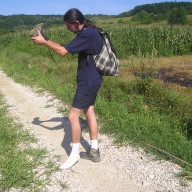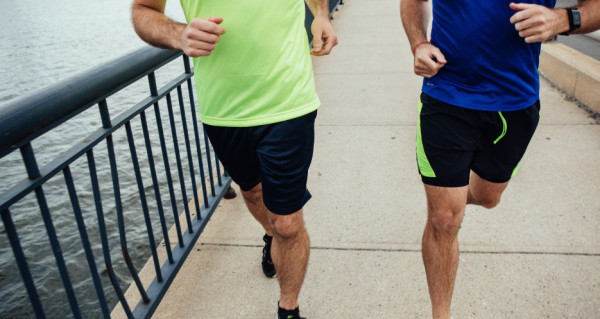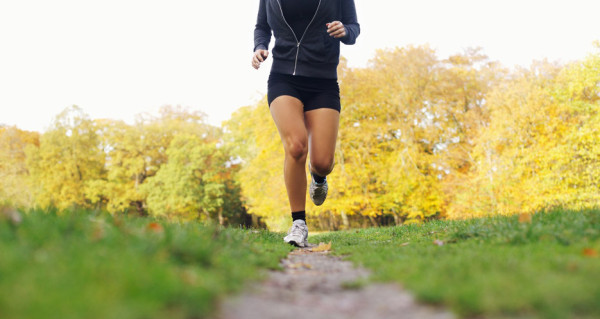I’ve been using Runkeeper for about two years now. In that time, I’ve tracked over 800 activities and I’ve found that my habits of using it are constantly changing, so I wanted to round up a list of my favorite use cases, accessories, and applications that partner with Runkeeper. Take a look below!
Casual runs with friends
At least twice a week, we have community runs with a couple of friends. The speed and endurance vary among us, so these runs are not about top performance. In these situations, I usually switch off audio cues, never turn on broadcast live or listen to music, but I shoot plenty of photos. Later on, when we drink our tea or beer afterward, we take the time to look through them. Also, if several other Runkeeper users attend, I can easily add them to the activity in the app, even if they did not bring their phones. (Here’s how you tag friends in your activities).
Discovering a new place while running—sightseeing like a boss!
Whenever I go abroad, or simply to a new place, I always bring my gear and try to do some sightseeing via running. In these cases, I usually run alone and don’t push the pace too much, but still, turn on audio cues. And also, I take a lot of photos of my friends and family back at home, to show them the nice places I am lucky enough to visit. What I rely heavily on in these situations is the map view throughout the run. Sometimes I just go out and run for 30-45 minutes wherever I like, and then I look at the map to find a nice way home. On other occasions, especially when I have limited time and chance to go out, but a lot of things to see, I create a temporary route and follow that during my run. (Here is a tutorial about how to use the Runkeeper app to find new running routes.)
Lonely, boring runs
I know, I know, how could a run be boring?! It is late in the night, You are supposed to go out to run a short 6k, but it is a bit raining, nobody wants to join, you don’t want to go to the forest to get all dirty, and so on. So you just keep it within the city, but it is kind of boring with the same houses everywhere, etc. If this has never happened to you, consider yourself lucky, otherwise: download the app “Zombies, run!” immediately. It costs a few bucks but is totally worth it. Personally, I’m not a big fan of the zombie apocalypse hype, but this app can definitely make these boring runs fun. I use it seldom, as I mostly either run with friends, or enjoy the peace around me, but on these rare occasions, I start this application. While listening to your favorite tracks, you get all kinds of messages from the radio tower, like “Zombies are closing on you, get faster!” (I highly recommend something like the Brave New World album from Iron Maiden. Nothing can top hearing “Your time will come!! from Dickinson after a “Zombies in 30 m” message from the tower.)
Zombies, run! is worth it’s own post but the important thing here is the app can immediately synchronize to the Runkeeper database, which is really neat.
Serious training runs
This one is rather seldom for me—I prefer running just to enjoy it, but well, it is good to do some serious training once in a while. When I am running like this, I always put on the audio cues and use two other features in Runkeeper: training plans and custom workouts. Let’s start with the latter one. Although I am not a big fan of fartlek runs, I did set up one or two different workouts on my phone. (Here’s a good tutorial on how to set those workouts up.) Also, it would be nice to do a sub 3:30 marathon one, so I signed up for that training plan in Runkeeper. During these runs I never listen to music, take pictures, look at the map, or do things like that. I do, however, bring my heart rate monitor (plenty of them work with Runkeeper luckily) and connect it via bluetooth. I like to keep my phone stashed in these cases, and prefer to rely on the audio cues or the display of my pebble.
Races
I am not a very competitive type and consider races to be more festive than anything else, thus this is less serious for me than the previous category. I like to take several pictures of the crowd while I run. Since I am not running ultra distances (yet, I hope), battery lifetime is not an issue, even for marathons. I usually set the audio cues from 5 minutes to 5 kilometers, or completely switch them off, as I want to enjoy the happenings as much as possible. For shorter runs, the battery of the Pebble is also sufficient, however, my experience is, that 3-4 hours is too much for it even with Bluetooth 4. There is an other feature of Runkeeper, however, which I really like to use, especially for the longer distances: broadcast live. It is really a lot of fun to see comments and supportive messages like “Keep it up dude, 10 more kilometers to go!” on Facebook after.
Hiking
Unfortunately I have less and less time for longer (50+ km) hikes in nature, but I still love them. The most limiting factor for this type of exercises is of course, the battery lifetime. Currently, I use power banks with my mobile phone. I am carrying around a backpack anyway, so there is plenty of space for it, and they did not cost much on eBay. With charging the phone once or twice, it can last easily for 70+ kilometers. If I go alone, and I know that nobody else will take pictures, I use the Runkeeper app, but turn of all cues. If I am not familiar with the route, and it is available in GPX beforehand, I set it in advance, so, that I don’t get lost too much. I definitely don’t use a heart rate monitor or Pebble, but I may use broadcast live, so that my friends can see when I am expected to finish. However, if none of the above features are required, I simply start a more lightweight app, that just does the basics for me: AeroTracker Pro. This app costs few bucks, but I think it is a decent choice. It has been developed especially for the Pebble, but what I like the most in it is it’s very simple, clean application. It tracks, shows the map, and thats it. And, well, an other important thing: it can sync to the Runkeeper database automatically. Since it takes only 3-5 MB memory, it can run on older devices flawlessly as well, which is a reasonable thing to consider when hiking. I prefer to take my old, backup phone with me, not the shiny new one with the big display.
Last, but not least, I am seriously considering to buy a Garmin device for this type of activities. Fortunately, with the “CopyMySports” app, those activities can also automatically synced from Garmin MyConnect to Runkeeper.
Biking outside
For shorter tracks, I just use Aerotracker Pro with Pebble, and stash the phone away. For longer (100+ km) biking, I do the same with a power bank. If I am biking home for example, I use Runkeeper and broadcast live, so my family can see when I am about to arrive. Instead of a power bank, I am considering to buy a smartphone holder and charger. If anyone has experience with it, please leave a comment.
Biking indoors/rowing machine
In order to train myself for triathlons, I decided to buy a stationary bike and only allow myself to watch the newest episodes of my favorite TV shows if I’m on the bike. I plan to do similar thing with rowing machines in the future. I usually log the exercise manually after a run with distance, time, and average heart rate. If, for a reason, the average heart rate is not enough, I can now use the stopwatch mode with the Bluetooth heart rate monitor, and log the activity that way.
Skating / Rollerblading
Personally, I usually go out skating / rollerblading with friends, so everything is same as in the case of the casual runs.
Swimming
I have not much experience with this, when I go to a pool, I usually add the data manually later on. The swim.com application would be a nice lap counter on Pebble, but it is too buggy for me. In case of a lake, I’ll try a waterproof phone case I bought on eBay with Runkeeper and GPS tracking, as soon as it gets warmer.
Sleeping
When I had an iPhone, I was absolutely satisfied with the SleepCycle app. However, I only had Android phones since I use Runkeeper. Unfortunately, SleepCycle was not available on Android for a really long time, and even now, the set of features is rather different. But finally, it syncs sleep data to the Runkeeper database. Unfortunately, the other Android alternatives are not very useful. It also provides a smart alarm function, which is great.
Rewarding apps
I already wrote another post about this, so here I just mention that thanks to the open HealthGraph interface, many rewarding apps can connect to Runkeeper. I personally use Pact, Fitcrown, Achievemint and Higi actively.
Pebble
I am really happy with my Pebble. I like the info it displays with Runkeeper, and also the simple pause function. I start the activity on my phone, immediately pause it, stash the phone away, and then run. Pause it from Pebble at the end, stretch for couple of minutes, and then stop the activity on the phone.
These are the tricks and tools that have helped me make the most of Runkeeper? What are some other tools you use to get the most out of the app? Let me know in the comments!




